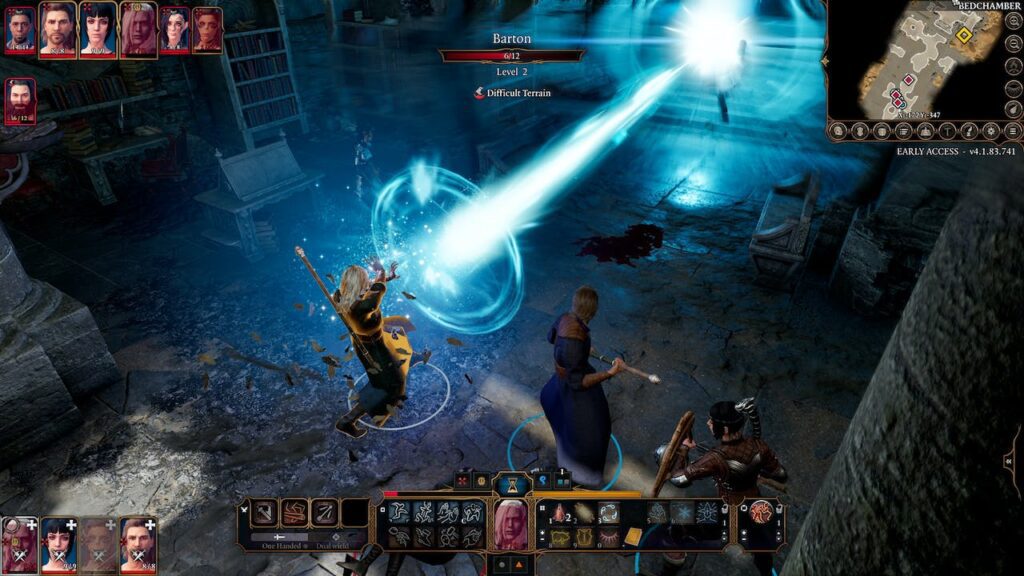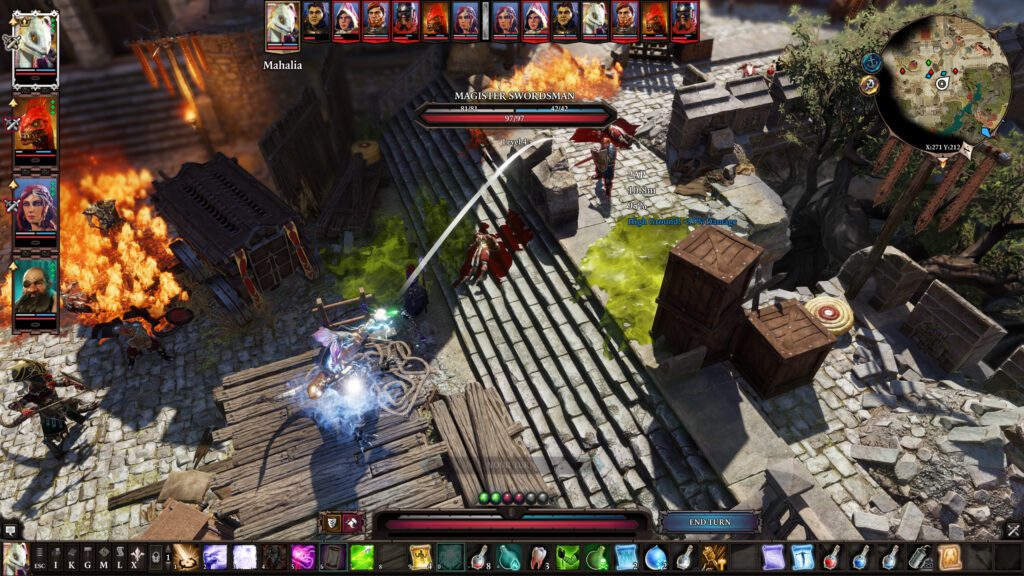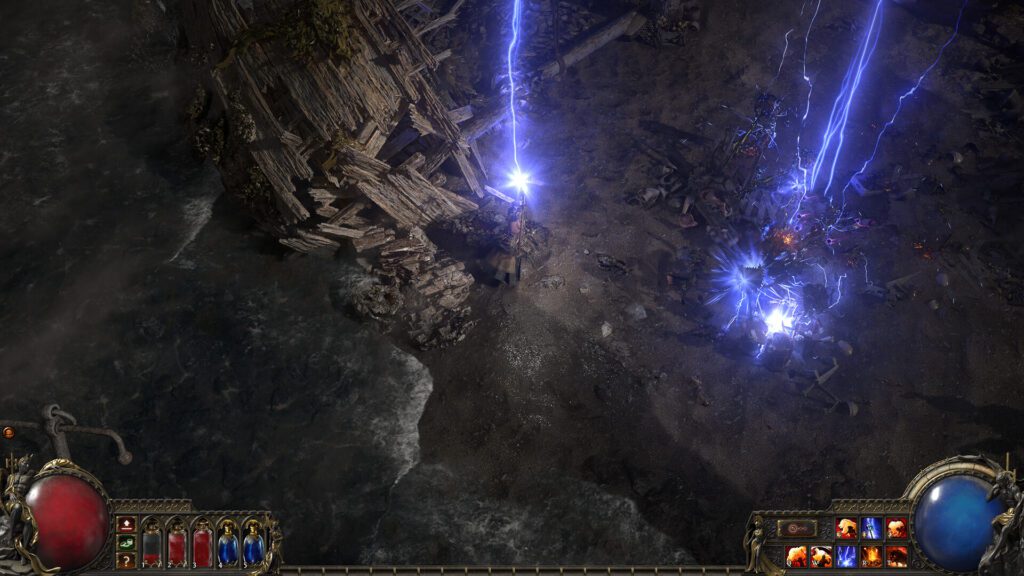Do you know how to create an isometric game? Isometric games, with their charming tilt and usually pixelated worlds, hold a special place in gamers’ hearts – but why? It’s akin to looking down on a miniature diorama, where each scene can unfold like a multi-layered puzzle box filled with secrets and things to do.
Unlike their flat-faced 2D brothers, isometric games offer a depth of vision that other styles simply can’t match. They allow for more detailed and visually engaging environments compared to the average run-of-the-mill 2D game. This means you can create awesome landscapes without having to dive deep into 3D (even though you need to understand trigonometry really, really well.)

Beyond their aesthetical allure, isometric games offer strategic advantages, too.
Their slanted view opens up avenues for really clever level design, where hidden paths and tactical positioning become key to conquering challenges – think flanking your enemies in real-time battles or completing puzzles that require acute spatial awareness.
These titles also often provide a better sense of space and distance, which makes navigation an intuitive experience for players.
But how does one actually create such experiences? Well, throughout this article, we’ll explain how to create an isometric game, carefully guiding you through its key design and development considerations while also providing some well-needed tips.
How to create an isometric game: design considerations
The isometric angle is more than a visual and strategic quirk, it also throws a unique wrench into the gears of game design, demanding specific considerations to envision truly engaging gameplay.
One of the coolest things regarding the isometric lens is that it’s extremely versatile. While it works better with RPG, strategy, puzzle, turn-based, and story-based games, it’s possible to make an engaging isometric game on almost every genre. This freedom allows for a creative fusion of genres, like blending turn-based combat with tactical exploration or layering platforming challenges onto resource management puzzles.
In other words: you can go wild with your gameplay loop as long as it’s enjoyable. Don’t be afraid to be bold and try something unique!
Even though this perspective flattens the 3D world creating a deceptive shallowness, don’t be fooled. Sometimes, all we need to do is to think with portals (or, in this case, with verticality.) Stairs, ladders, bridges, you call it – they can guide players to secret passages that snake beneath deceptively flat surfaces and other places.
Remember, players will be constantly scanning the landscape for clues, so use the limited view to your advantage. For example, you can place some secrets “hidden” in plain sight, but just out of reach, encouraging players to explore the area for a secret entrance.

Also, the isometric view can be both friend and foe to visual clarity. On one hand, it offers a much wider perspective; on the other, it can create massive amounts of clutter. Assets can get stacked on top of each other and become a pixelated mess, obscuring critical information and potentially frustrating the player.
For this reason, you have to be very careful when thinking about unit size, spacing, and animation clarity. You also must ensure actions are readable even within the heat of battle. Of course, you probably won’t be able to cover all edge cases, but try your best to minimize visual clutter – your players will thank you for putting in the effort.
By the way, don’t be afraid to break the isometric mold at times. Consider implementing temporary zooms or camera shifts to highlight important moments, like a character’s special attack or a key point in your game’s plot to further enhance the visual experience.
Other than these considerations, you can treat designing for an isometric game the same as designing for your average game – build around a core mechanic; make it easy to learn, but hard to master; provide regular feedback; reward players for their efforts; ensure balanced gameplay options, and so on.
Isometric game development: what is there to consider?
Beneath the surface of every game lies a massive code base, and writing thousands of lines can be troublesome if you don’t know where to start. Well, the first thing you need to do is choose your tools for the job.
In our case, you’ll need a game engine (and knowledge of its respective programming language). There are many options to choose from, with Unreal Engine (which uses C++), Unity (C#), and Godot (GDScript, but also accepts C# and other languages) being the most popular kids on the block.
Having said that, there are some specialized engines for creating isometric games, like RPG Maker MV (JavaScript) and Construct 3 (JavaScript, but offers a no-code option with visual scripting), which come with inbuilt tools and pre-configured mechanics. This results in a faster, streamlined development pipeline, but offers much less flexibility than their generic (and powerful) counterparts.

All in all, consider your project’s scope, your development team’s skillset, the complexity of your desired mechanics, and your personal preferences when choosing a game engine. Don’t be afraid to experiment here either – game engines and programming languages can be quite hit or miss when starting.
After that, it’s just a matter of perfecting your programming skills, which involves learning efficient algorithms and maintaining a clean, readable code base, refining your game’s design, and fixing bugs/performance issues as they appear. If you’re developing a multiplayer-based game, it’s also a must to figure out databases and networking.
Designing assets for isometric games
Now that we’ve talked about the basics, let’s sprinkle some asset design considerations for isometric games.
First, you’ll need to define early on which kind of projection you want, as it will dictate how your assets will be created. In case you don’t know, the term “projection” refers to “how a three-dimensional scene is transformed onto a two-dimensional plane”, which in our case, represents what the players see.
There are two main types of projection: perspective (which requires at least one vanishing point) and orthogonal (which doesn’t use vanishing points at all, so all lines are parallel). The latter is much more popular among game developers.
By the way, even though many camera angles fall under the “isometric” umbrella, true isometric games are rather rare, as they require representing 3D objects in a 2D space with equal measurements along each axis, which creates a sense of uniformity and balance.
Second, isometric games often rely on grid-based movement and interaction. Designing your assets with a grid in mind ensures that the isometric illusion stays intact, making movements fluid and predictable.
Creating assets for isometric games requires copious amounts of attention to detail and consistency, as you must ensure your assets harmonize with each other. Their color schemes must be consistent, and so must their angles and proportions. It’s a bit like assembling a puzzle, where each asset contributes to the grand picture, but in a game engine.

While consistency is critical, don’t be afraid to add a touch of rebellion – it can add so much flair to your isometric world. Deviate slightly from the norm to break the monotony and surprise your players. Even a subtle shift in color or a change in proportions can keep the visual experience fresh and exciting (and maybe even hint at some extra loot or hidden lore!)
And since isometric games play with depth in a 2D space, it’s essential to nail down depth perception. Use shading, color gradients, and other visual cues to convey distance. Players shouldn’t be squinting at the screen wondering if certain pixels are mere illusions or an actual treasure chest, you know?
Test, test, test
As you develop your isometric game, don’t neglect testing. Yes, creating those beautiful landscapes and writing plots is exciting, but remember, lurking beneath the surface, you might have some bugs or, even nastier, performance issues. If left unchecked, these critters can quickly crush your players’ immersion and gameplay experience.
But it’s not just about annoyances. Some bugs can completely break the game. Imagine walls disappearing, revealing the empty void behind your world, key items vanishing, rendering quests impossible to complete, or an important enemy malfunctioning and clipping through a wall, which makes them “invincible.”
Suddenly, your beautifully crafted experience becomes an exercise in futility (or a joke in the gaming community, like Cyberpunk 2077 still is.)
So, how do you avoid these issues before they ruin the players’ experience? It’s all about testing your creation extensively.
While playtesting yourself is essential, you don’t have to do it alone. Gather a diverse group of testers who are interested in your game, preferably with different play styles and experience levels, and throw them at your game, encouraging them to explore every corner, interact with every mechanic, and try everything out.
You can also use automated testing tools, record gameplay sessions for further review, track performance metrics (especially memory usage and drops in performance), and analyze player behavior – these sleuths can help you identify problems you would otherwise never find until it’s too late!
Don’t forget that testing is an ongoing task, meaning it must be done regularly as you implement more features into your creation. And, honestly, chances are you won’t be able to catch every bug but do make an effort to catch and fix the most severe ones.
How to create an isometric game: conclusion
All in all, creating an isometric game isn’t just about charming assets and cool stories – it requires a smart mix of strategic design, efficient programming, and meticulous attention to detail. But, when done right, the rewards can be more than incredible, offering a unique visual depth and perspective that other genres usually can’t replicate.
As we mentioned above, don’t be afraid to get creative and experiment with different genres, as isometric games are naturally versatile. Whether you’re crafting a heart-pounding RPG like Baldur’s Gate, a strategic MOBA like League of Legends, an ARPG with deep character customization possibilities like Path of Exile, or a city builder like SimCity 2000, you don’t have much to worry about!
By the way, if you need some helping hands with all things game development, why not partner with an established studio like Main Leaf? We have a roster comprising over 70 talented professionals covering all parts of game development, be it design, asset creation, or even modern gaming trends, like VR and blockchains.
We also have extensive experience with Unity and Unreal, the most popular game engines out there, and we can develop your ideas for mobile, PC, consoles, and much more in record time. So what are you waiting for? Get in touch with our team by shooting us a message below!

